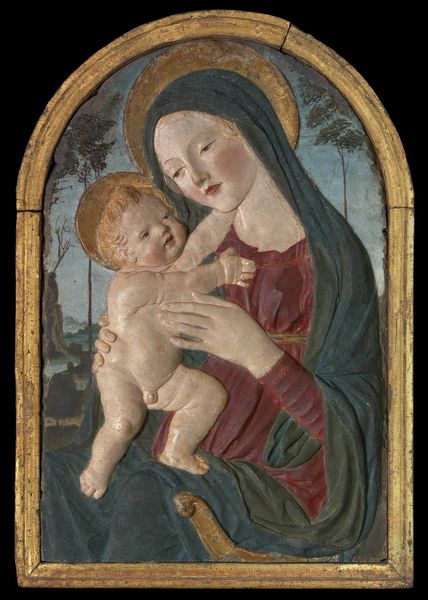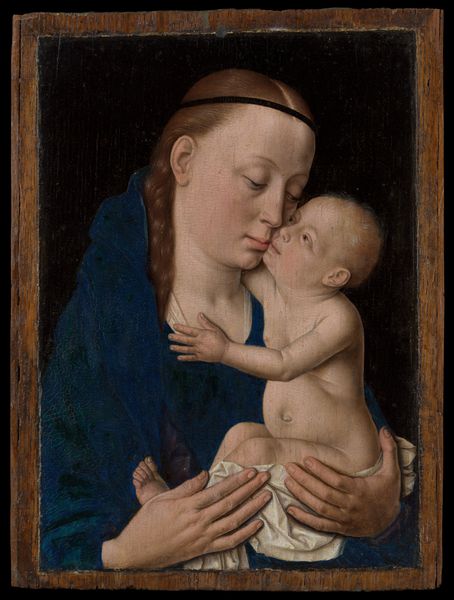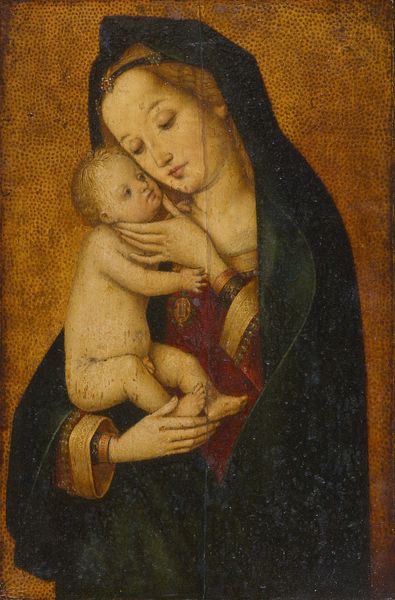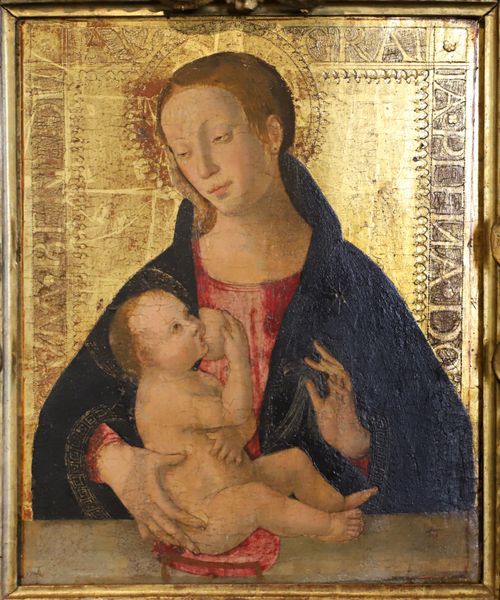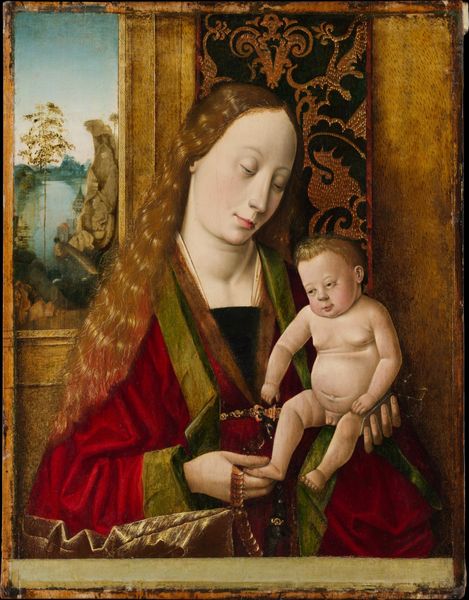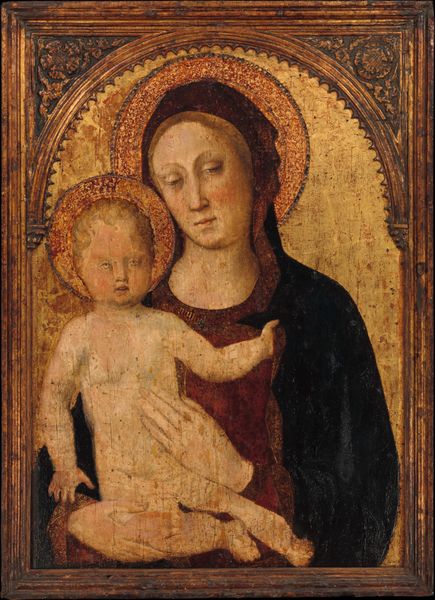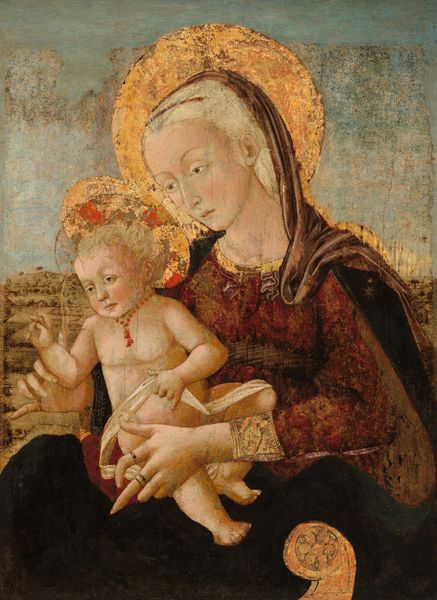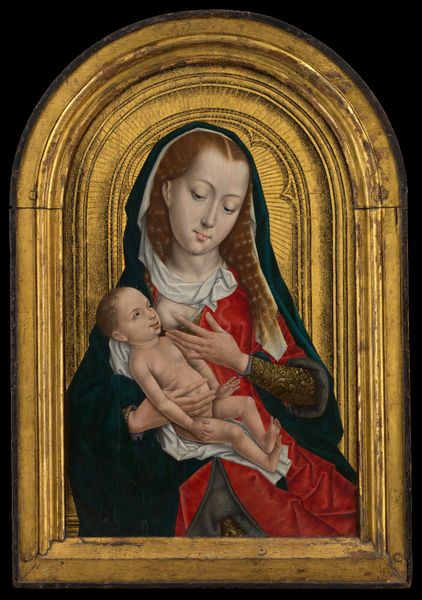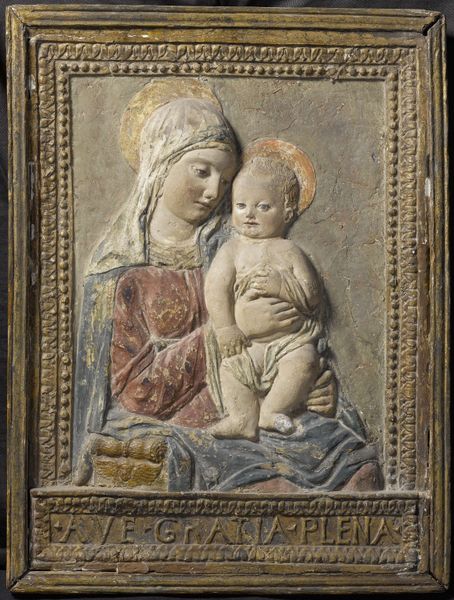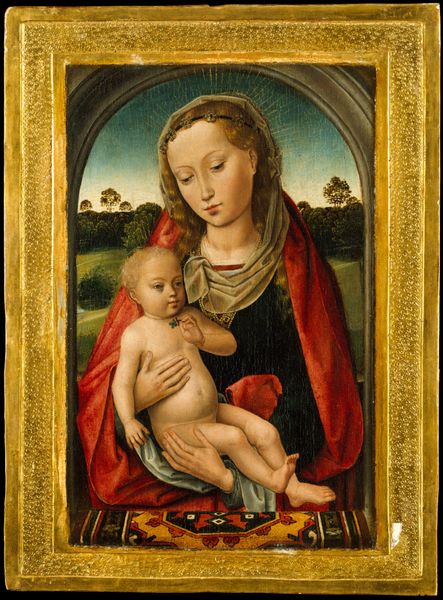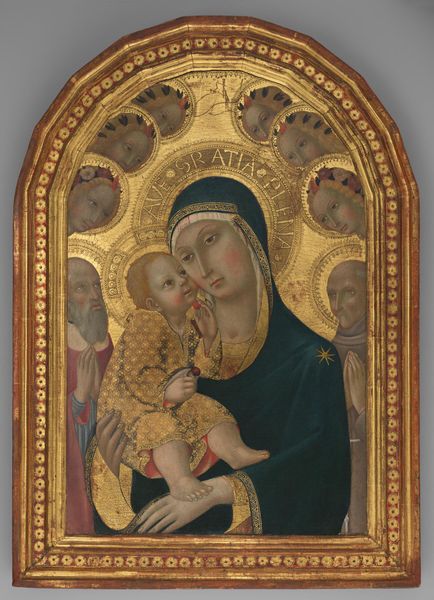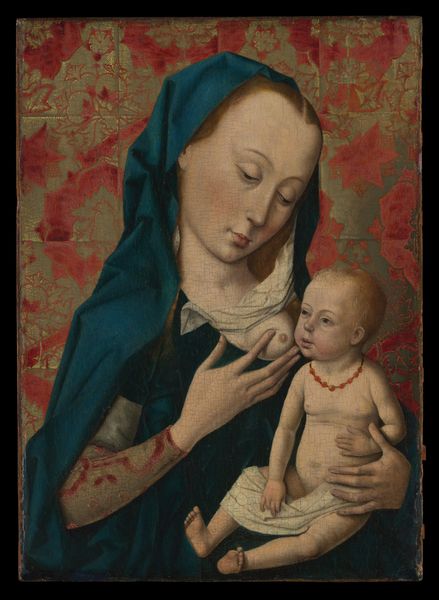
tempera, relief, sculpture
#
portrait
#
medieval
#
tempera
#
sculpture
#
relief
#
figuration
#
oil painting
#
sculpture
#
italian-renaissance
Dimensions: 61 × 43.2 cm (24 × 17 in.)
Copyright: Public Domain
Curator: Look at this intimate depiction of the Virgin and Child. This piece is attributed to Desiderio da Settignano and was likely created around 1450. Editor: It's remarkably tender, almost melancholic. The muted color palette gives it a solemn quality. Curator: Settignano was an Italian Renaissance sculptor celebrated for his delicate touch. It's rendered with tempera on what appears to be a raised relief. Considering this piece was made in Florence, what readings about gender roles can we draw from it? Editor: Well, maternal devotion is clearly front and center here, isn’t it? The softness in Mary's gaze, the way she cradles Jesus… These are classic visual cues. Note how Christ responds in kind, holding fast to his mother’s robe; in the 15th century it reinforced prescribed, often constricting, ideals of motherhood within the religious and societal frameworks. Curator: That resonates, yes. It’s not just about piety but also power, though. The golden halos signify divine status. Notice also that the placement is above the linear panel, it represents and elevates its subjects. What do those radiant details signify? Editor: The halo, naturally, symbolizes sanctity and spiritual illumination, harking back to pre-Christian sun disks, which were associated with deities. Gold was, of course, associated with wealth, kingship and religious status throughout human history. But look closer—they both have halos—equality, a duality of divinity. Curator: How do we unpack that portrayal, considering gender hierarchies of the period? Did Desiderio consciously challenge social norms, or inadvertently reinforce them? It also looks remarkably life-like. Editor: We’re likely both seeing elements of both in the rendering. Realism emerged more clearly in the Renaissance era. We could easily conclude Settignano sought to both humanize Mary and her child, all while immortalizing their divine qualities via familiar visual cues and the tempera that made that soft realism possible. Curator: Such fascinating nuances to consider. Thank you! Editor: Always a pleasure to decipher such beautifully enduring, if enigmatic, artworks!
Comments
No comments
Be the first to comment and join the conversation on the ultimate creative platform.

